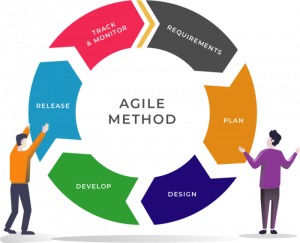Hi team,
Please find my Three Definitions assignment below.
Feel free to let me know if you have any questions or concerns. I look forward to reading and peer reviewing your definitions!
Kind regards,
Jen
Introduction: Students will recognize the importance of definitions in technical writing as they work through this exercise. A situation and a relatively complex term will be chosen with an audience of non-technical readers. To differentiate between the levels of details required, the term will be defined in three specific ways: parenthetical, sentence, and expanded. It is important to understand how audience and purpose influence the need for definition and the selection for the appropriate level of detail.
Term: Agile
Situation: The project manager must educate the project’s stakeholders on the chosen project management process.
Parenthetical Definition: Project managers commonly utilize the process of agile (iterative project management methodology) in software development.
Sentence Definition: Agile is an iterative project management methodology that is mainly used in software development for its focus on collaboration, communication, and coordination.
Expanded Definition: Back in the 1990s, the software industry faced “the application development crisis” or “application delivery lag” (Muslihat, 2018). Traditional development models utilized a timeline approach, hindering the speed and accuracy for meeting customer demands and expectations on time. By the time the application was complete, requirements and systems often differed from its original design.
With a common goal of developing better software, seventeen experts in computer science and software engineering drafted the Agile Manifesto in 2001. The declaration is composed of twelve key principles and four foundational values being:
- Individuals and interactions over processes and tools
- Working software over comprehensive documentation
- Customer collaboration over contract negotiation
- Responding to change over following a plan
Agile methodologies adhere to the principles and values outlined by the manifesto. The structure promotes iterative development with techniques focussing on collaboration, communication, and coordination. Linear, sequential approaches, such as the Waterfall method, were too rigid when speed and flexibility were paramount (Sacolick, 2020). The Agile Manifesto was created on behalf of the inadequacies of traditional development methods.
Altvater (2020) breaks down the core concepts of Agile methodology into six phases:
- Requirements – identify the current problems and gather information about requirements
- Plan – determine the cost and resources required for implementation
- Design – review the plan for feedback and suggestions to create an outline of specifications
- Develop – start the development process and verify defined requirements are met
- Release – deploy the software to production environment
- Track and Monitor – update and adapt when conditions or requirements change

FIGURE 1 Process of Agile project management
References
Altvater, A. (2020, April 8). What Is SDLC? Understand the Software Development Life Cycle [Web log post]. Retrieved September 27, 2020, from https://stackify.com/what-is-sdlc/
Muslihat, D. (2018, March 2). Agile Methodology: An Overview [Web log post]. Retrieved September 27, 2020, from https://zenkit.com/en/blog/agile-methodology-an-overview/
Sacolick, I. (2020, February 25). What is agile methodology? Modern software development explained. Retrieved September 27, 2020, from https://www.infoworld.com/article/3237508/what-is-agile-methodology-modern-software-development-explained.html
[Process of Agile project management]. (2019, May 17). Retrieved September 27, 2020, from https://miro.medium.com/max/700/1*5pIj9XMOGg30Z0s16puJ_A.png
Leave a Reply